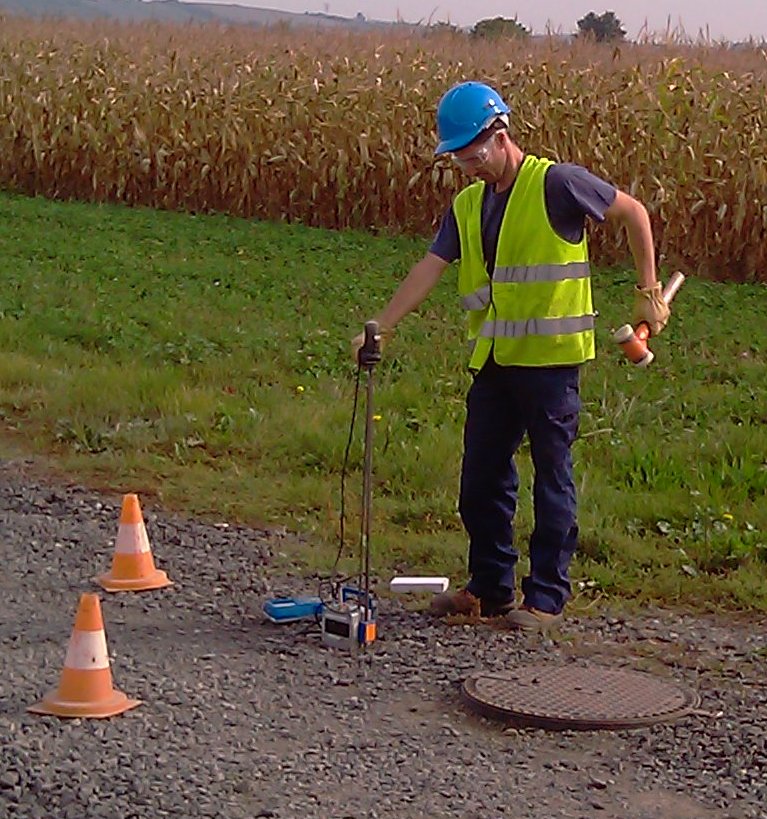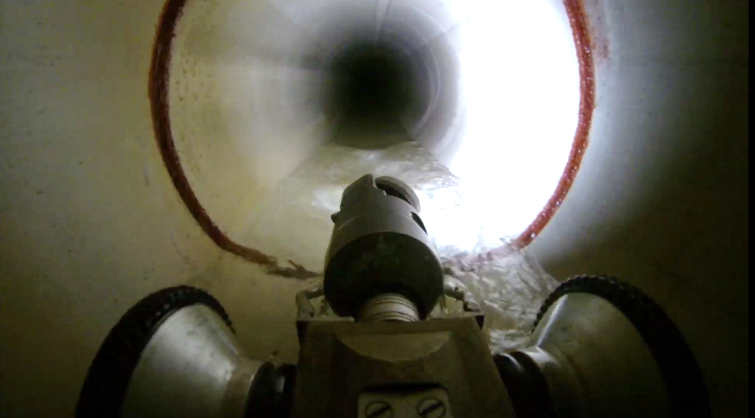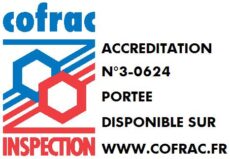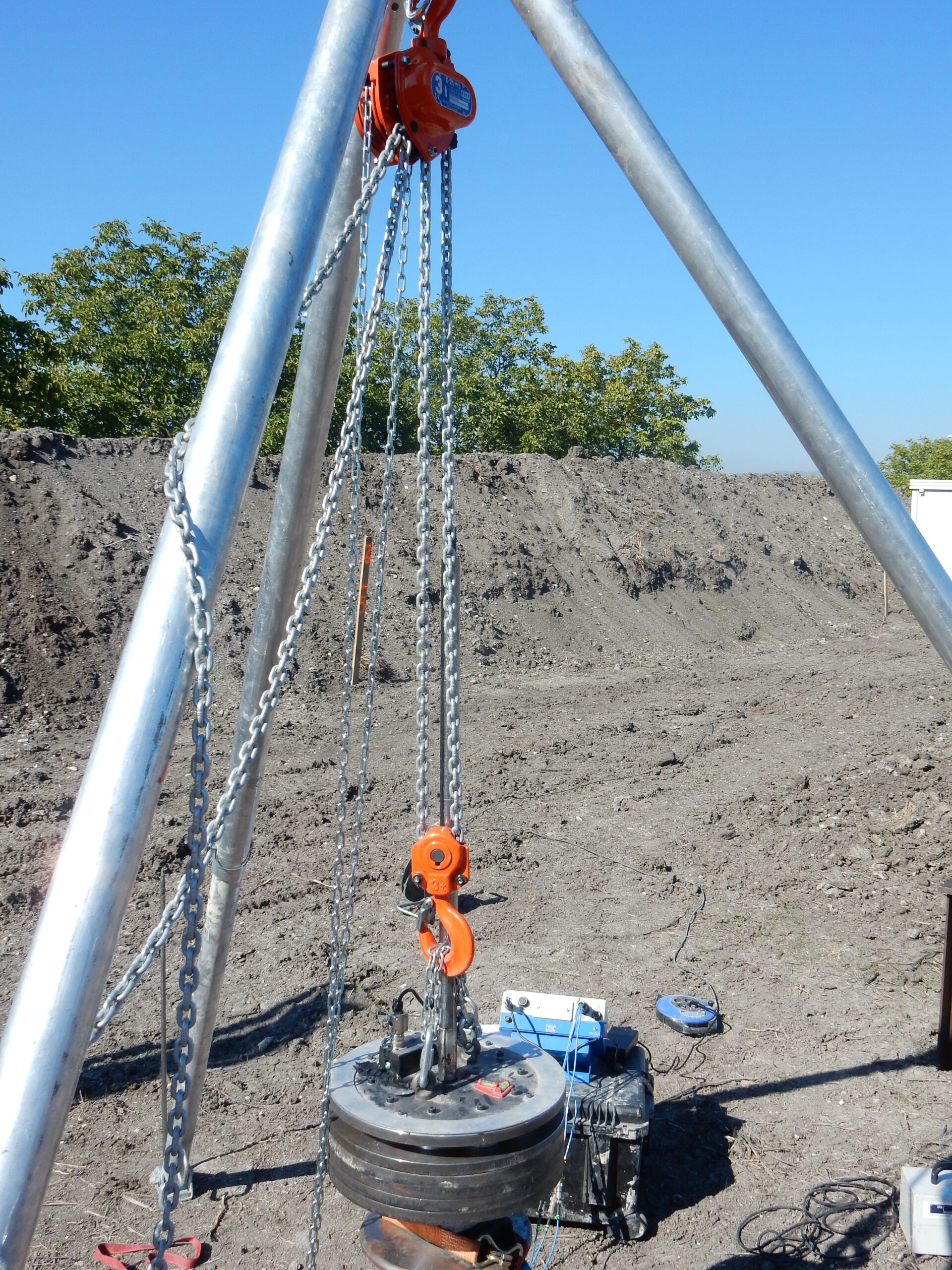Network Control
Compaction control
Sol Solution controls and analyses the compaction of new or existing backfills and trenches based on the standards in force and the experience of a company that has been specializing in geotechnical studies for over 30 years.

Visible or invisible surface anomalies such as road subsidence or crushed pipes can be the cause of poorly executed compaction. The compaction test determines whether the backfill has been laid according to the rules of the trade. A well-compacted backfill promotes the durability of networks.
For diagnostic purposes, the compaction test can also be coupled with an endoscope in order to check the height of the compacted layer and the different materials used.
Sol Solution is equipped with its own equipment that complies with the NF P 94 105 and NP 94 063 standards, allowing compaction control to be carried out on all types of terrain.

Televisual Inspection
Sol Solution carries out visual and televisual inspections in order to verify the installation and condition of sewerage pipes or structures.
New or ageing sewerage networks may present numerous anomalies that could jeopardize the proper functioning of the collection system and the flow of effluents. Pipe inspection can detect the presence of deposits, slopes, connections, cracks, crushing, etc. …. It has become a major partner in the course of sewerage works, intervening before, during and after the laying of pipes.
Television inspection can also be used to locate pipes with ground markings and/or geo-referencing of structures for better knowledge of the assets and to update network plans.
SOL SOLUTION is equipped with a vehicle-mounted inspection system that can be radio detected, as well as portable equipment and software that comply with the NF EN 103508-2+A1 standard.
Leakage Tests
Sol Solution carries out watertightness tests on new or existing gravity or high-pressure sewerage pipes and structures.
Pollution of the natural environment or degradation of structures may be the cause of effluent exfiltration from sewage pipes, which cannot be observed during visual or television inspection. Leakage testing allows the presence or absence of this type of anomaly to be determined.
Leakage tests can also be coupled with TV inspection in the context of a leak detection on sewerage networks in order to reduce the repair area(s).
SOL SOLUTION is equipped with electronic systems allowing the pressurization of pipes and structures in compliance with the NF EN 1610 standard.
Reception inspection of new sewerage networks – COFRAC accreditation
SOL SOLUTION is accredited by COFRAC N°3-0624 in the field of “Acceptance inspection of new sewerage networks – excluding collectors with a diameter greater than or equal to 1000 mm”.

The regulations require that new sewerage systems be inspected prior to acceptance by an independent and accredited inspection office.
Sol Solution is totally independent, belonging to no group of companies and having no subsidiaries in the construction companies, project managers, suppliers and manufacturers of pipes, operators of sewerage networks and SPS coordinator.
As such, Sol Solution’s quality system meets the requirements of the ISO/CEI 17020 standard as a type A accredited body (body providing exclusively independent third party inspection services).
SOL SOLUTION contributes to the acceptance of new sewerage networks by offering compaction controls, visual and televisual inspections, as well as watertightness tests in compliance with the standards in force and according to the rules of the trade.
Control of deep foundations
Testing of micropiles by low stress dynamic loading
The proposed test allows to check the bearing capacity of all types of micropiles (I to IV) using a non-destructive method that is quick and easy to implement.
This new innovative method was developed by Sol Solution, in partnership with the Fédération Nationale des Travaux Publics ( FNTP ).
The test consists in carrying out a series of impacts with increasing impact energy on the head of the micropile from a falling mass with variable drop heights. For each impact, the deformation, force, acceleration and velocity of the shock waves are measured and calculated by means of various sensors installed at the head of the micropile.
The analysis and processing of the recorded signals allows the calculation of the maximum elastic displacement (Smax) and the equivalent static force (Fstat) for each impact. The increase of the hammering energy allows to draw a loading curve (Fstat vs Smax).
In parallel, the plastic displacement is monitored from an optical level to observe the final displacement in order not to damage the integrity of the micropile.
The check is validated when the equivalent static force reaches a value between QELS and 1.3xQELS, where QELS is the bearing capacity at the serviceability limit state and the permanent plastic deflection is limited.
Statistical axial tensile test
Control or failure test (NF P 94-150-2).
This test consists of applying a controlled force to the micropile in constant increments and measuring the displacement of the foundation element at the head in parallel. The purpose of the control test is to verify the bearing capacity of the micropile up to 1.3 times its bearing capacity in the serviceability limit state (1.3xQELS). The fracture test is carried out until the micropile is pulled out and its maximum bearing capacity is thus known.
Controlled displacement test (NF P 94-242-1).
It consists of extracting the foundation element by applying a constant displacement speed and measuring the tensile force applied until it is pulled out. It allows, in particular, to determine the frictional parameters of the soil crossed.
Static tests require a reaction system (concrete mass, beam, etc.), a device for applying the tensile force (hollow cylinder/pump), and force and displacement measurement equipment.
Integrity test on piles
Auscultation of a pile by impedance (NF P 94-160-2) and by reflection (NF P 94-160-4).

These two methods aim to determine the length of the pile and to check its integrity by traction. They correspond to the analysis of the shock wave transmitted in the foundation element by means of an instrumented hammer (impedance) or not (reflection). The speed of the wave in the pile allows to estimate its length, the quality of anchoring and to identify possible anomalies (discontinuity, section variation…).
